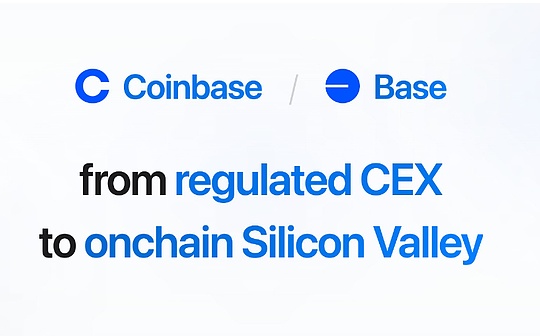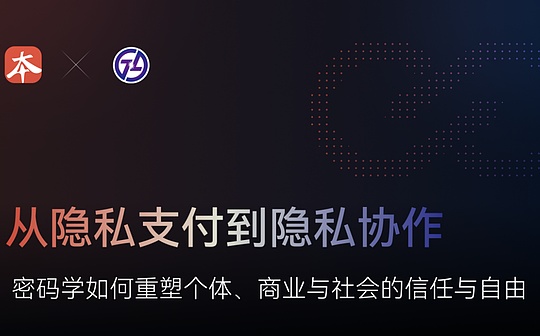
Author: Kava Labs Source: medium
In articles related to AI-driven risk assessment, we have learned how AI can enhance network security through anomaly detection and predictive analytics.However, what would happen if another independent innovative technology emerged and triggered a new technological paradigm shift in the field of decentralized finance (DeFi)?What would happen if this new technology could completely overturn the foundations DeFi relies on by breaking through encryption?
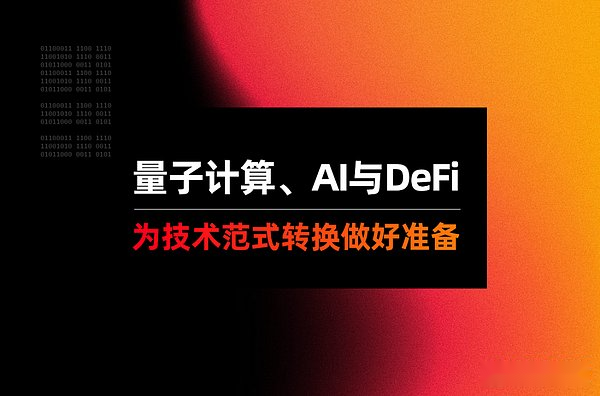
With the development of quantum computing, many experts are also concerned about the future.These concerns have been around since the beginning of cryptocurrencies, which have been around since the beginning of cryptocurrencies, but have been further intensified as Google announced its latest quantum computer chip Willow in the fourth quarter of 2024.
Therefore, in this article, we will explore the principles of quantum computing, its potential threat to DeFi, and whether the industry should be wary of this in the future.
Comparison of traditional computing with quantum computing
When exploring the threat of quantum computing, we first need to understand that it is fundamentally different from the traditional computing systems we are familiar with today.In order to begin to understand it, we must dig into the smallest unit of digital information—— bits.Bits are the basic building blocks of all modern computing technologies, and have been represented by 0 or 1 throughout history.
This basic unit allows modern computing technology to develop structurally based on it.The power of binary systems allows us to build a solid foundation on which larger and more complex systems can be built.
Quantum computing challenges the nature of binary systems by creating an alternative to such computing units.In quantum computing, alternative qubits are possibilities not only in the position where traditional bits can be, but also in the various authenticity of whether they can be encoded as 1 or 0.
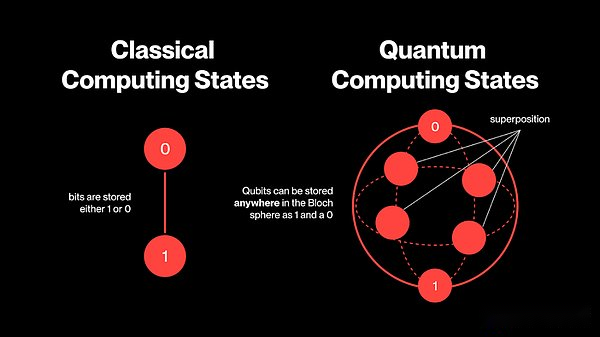
Superposition
The superposition state is one of the cornerstones of quantum computing, but it is very abstract and may be difficult for some to understand.In traditional computing, the state of the bit is always 100% sure, either 1 or 0.In quantum computing, qubits (qubits) can represent 1 and 0 at the same time.You can imagine something is “yes” and “no” at the same time.This doesn’t seem to make much sense in traditional thinking and classical models.
The easiest way to explain this phenomenon is through the 20th-century physicist Erwin Schrödinger and his theory on the principles of uncertainty in quantum mechanics.You may be more familiar with Schrödinger’s cat experiment, in which we are asked to imagine a situation where a cat is placed in a sealed box with a Geiger counter and a piece of radioactive material that is decayingwill release poison gas.In theory, since the decay process of radioactive matter is uncertain, the cat is technically in a state of both life and death before the box is opened, because we cannot determine which state is accurate until we open the box and check it out for ourselves.Before being forced to perform calculations, qubits are both “living” and “dead”.

Entangled state
If you continue reading, congratulations, the concept of quantum computing has not broken your brain yet.So, after we understand what qubits are and how they are represented, we need to further explore how the particles inside each qubit are related to each other.This is calledEntangled state, it is the second cornerstone of quantum computing.
We have seen how quantum computing works on a thought experiment model similar to Schrödinger Cat.However, quantum computing, under the influence of entangled states, pushes this analogy to a new level.Quantum computing not only maintains two computing states at the same time, but involves more situations that interact and change each other through multiple locations.Imagine you navigating in a maze.In traditional calculations, if your first path reaches a dead end, it can be classified as zero.The second attempt also fails, and the process continues in sequence until the correct answer is found.In the same situation, quantum computing will map all routes at the same time, and each failed route and successful route will affect the effect of all other situations.
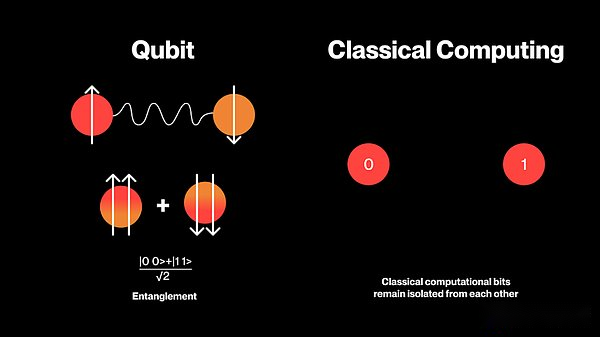
Thought experiment or something?
Although it is very difficult to understand the theory of quantum computing, it is crucial if we consider the innovation of computing power.The superposition and entangled states of qubits allow quantum computing to handle problems far more than anything we can understand today.
We showcase the different sizes of modern digital information in our article on the limitations of technological innovation.From how many KB is needed to store an average word processing file for a five-page document, to how many MB is needed for a three-minute MP3 audio file, understanding the scale of digital data is understanding why fundamental building block reconstructions from bits to qubits produce thisThe key to the compound effect.
With this reference framework, we can begin to understand the power of quantum computing.Google claims its newly launched quantum chip Willow will handle a problem in five minutes, and today the fastest traditional computer on the market will take ten trillion years (10 to the 27th power of the power of the world) to solve it.Five minutes comparison 10,000,000,000,000,000,000,000,000,000,000,000,000,000, which can be seen from this.
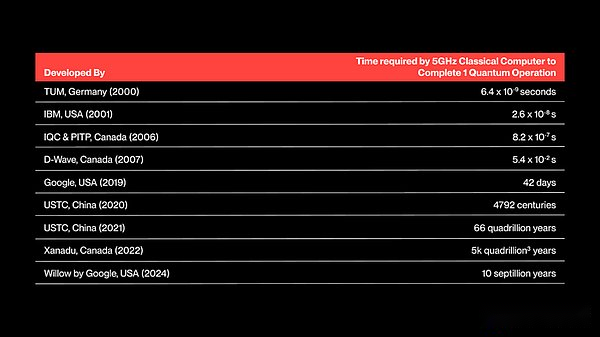
The end of modern cryptography?
You may have seen that quantum computing may begin to pose a systemic threat to the decentralized finance (DeFi) industry.Such powerful computing power is the kind of technology that may replace the encryption security that supports the entire blockchain ecosystem.Brute-force attacks can instantly reveal private key information and steal user accounts.
As mentioned in our previous article, the interoperability integration of artificial intelligence and blockchain may lead to a “poison pill” effect in which malicious actors operate.Now, combining these theories with the potential of quantum computing, it is easy to imagine a future where the entire DeFi field will be completely disintegrated in minutes.
Reasons for optimism
If you are worried about the threat quantum computing poses to DeFi, there are still multiple reasons to keep you optimistic.First, if you haven’t realized that quantum computing is extremely complex, difficult and expensive.Today, only a very small number of subcomputers exist, mostly developed in a closely regulated and controlled environment such as IBM, Google, Amazon and Alibaba.These companies have not undermined the interests of DeFi encryption security.Because doing so will undermine the same cryptographic security used to protect traditional banks and national defense infrastructure, including nuclear reactors and weapons systems.
Secondly, we often underestimate the importance of our industry.Currently, the total value (TVL) in the DeFi sector is $125 billion, and by comparison, it remains a very young and small-scale industry.Money market banks have a market capitalization of over $909,647 billion, and integrated oil and gas have a market capitalization of over $109 billion.While this may sound a bit pessimistic, attacking the DeFi field will be the least attractive target if quantum computing technology accelerates and becomes a threat, as everything else in the world will be equally attacked and even more vulnerable to threats.Even if DeFi is the target, we will face the social consequences of quantum computing attacks, especially in other more urgent areas such as global supply chain disruptions, AGI (General Artificial Intelligence) or nuclear weapons deployment.Securing DeFi and private keys may no longer be our biggest concern.
In addition, as technology advances and new threats emerge, new solutions will follow.Post-Quantum Cryptography is an important issue in this field at present.Developers have been deeply aware of the threats that quantum computing could pose if it is released without sufficient security.The National Institute of Standards and Technology (NIST) is leading the establishment of global post-quantum encryption standards.
We should also recognize that the emergence of quantum computing is a positive force.Having the powerful computing power empowered by quantum computing models will lead to unprecedented discoveries in areas ranging from space travel to global Internet of Things and artificial intelligence integration.Through our series of articles, we have seen AI accelerate innovation in smart vehicles, medical breakthroughs and drug discovery.Quantum computing will further enhance and accelerate the pace of discovery, even beyond the imagination of the most optimistic futurists.
Finally, we should admit that quantum computing is still in its early stages.Even if Willow quantum computing chips have already been released, the practical application of quantum computers in the real world is still limited.To be fully operational and integrated with the real world, quantum computers must have extensive indexes of the current digital environment.Transforming industries to resist the threat of quantum computing, or simply being prepared to meet the benefits it brings, will be a difficult task society must overcome.Regardless of the future of quantum computing, it is destined to be an interesting and destructive path.How DeFi, artificial intelligence and post-quantum encryption will be one of the most defining periods of the 21st century.


